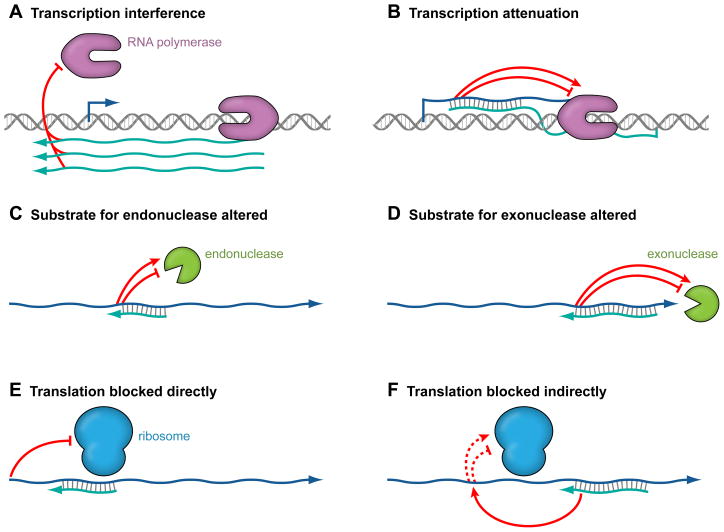Figure 2.
Mechanisms by which antisense RNAs act. Antisense RNAs can induce transcription interference (A), where transcription from one promoter blocks transcription from a second promoter by preventing RNA polymerase from either binding or extending a transcript encoded on the opposite strand. Transcription interference does not involve basepairing and does not occur when the antisense RNA is provided in trans. In transcription attenuation (B), base pairing of the antisense RNA to the target RNA causes changes in the target RNA structure ultimately affecting transcription termination. Antisense RNAs can also affect target RNA degradation by endonucleases (C) and exonucleases (D). In these cases, base pairing between the sense and antisense RNAs can directly either generate or block a ribonuclease target site. Antisense RNAs can also indirectly affect the binding of the ribonuclease at a distance from the site of base pairing. Finally, antisense RNAs can directly block ribosome binding (E) or indirectly positively or negatively impact ribosome binding by affecting the target mRNA structure (F). The sense RNAs are indicated in dark blue while the antisense RNA are shown in light blue.

